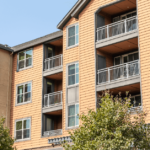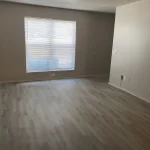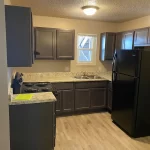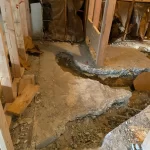Preparing for tornado season and tax credits doesn’t have to feel overwhelming. In the Midwest and Plains states, where storms hit hardest, smart planning can make a big difference. For an affordable housing contractor or LIHTC builder, adding storm-resilient features can protect families and open the door to valuable financial incentives. This blog explores how these builders in places like Oklahoma and Montana can use tax credits, manage rising insurance costs, and create safer homes—all while staying within budget and building stronger, storm-ready communities.
Tornado Risk by Region
Let’s explore how risk varies across states so builders know where to prioritize.
Oklahoma’s Missile Zip Codes
Oklahoma, home to iconic “Tornado Alley,” sees more twisters than most. Wind speeds here often exceed 150 mph. That’s why insurance costs skyrocket, and affordable housing contractors must design for serious gusts.
Why Montana Isn’t as Affected
Out west in Montana, tornado frequency is lower. Still, when tornadoes do touch down, they can be surprising. A LIHTC builder in Montana might embed storm resilience to protect investments and qualify for tornado season and tax credits.
Tax Credit Programs for Storm Shelters
Governments offer incentives to build sturdy shelters. Here are key options:
- Federal tax credits: Claim part of your storm shelter costs.
- State-level funding: Some LIHTC builders in Oklahoma get additional credits for reinforced safe rooms.
- Local support: Grants or bonds may help offset the price for affordable housing contractors.
Using tornado season and tax credits, budget-conscious builders can add tornado-resistant features without breaking the bank.
Insurance Challenges in High-Risk Zones
Insurance can crush project budgets in zones like Oklahoma. Rates may be 2−3× higher because companies assess wind risk. Even in Montana, insurers factor in heavy snow or hail backups, raising costs. By using the tornado season and tax credits and reinforcing structures, affordable housing contractors can lower premiums and attract lenders.
Best Practices for Housing Contractors
Practical tips to strengthen homes and manage costs:
- Reinforce walls with steel or concrete
- Anchor roofs on reinforced frames
- Install FEMA-approved safe rooms
- Use impact-resistant windows and doors
- Leverage the tornado season and tax credits, and grant programs
- Consult insurers before design to maximize premium relief
Both affordable housing contractors and LIHTC builders can integrate these steps.
Case Study: Affordable Tornado Shelters
In Oklahoma, a nonprofit affordable housing contractor built a 50-home complex. Each unit includes a reinforced room and backup energy supply. By claiming the tornado season and tax credits, and with insurer discounts, overall project costs stayed within LIHTC budgets. Residents sleep better, and insurers feel safer writing policies.
FAQ
Q. Are there tax deductions for fortress-level home shelters?
A. Yes. The IRS allows federal credits for qualified storm shelter costs. State programs may add another layer of benefit.
Q. Why is insurance triple in tornado-prone areas?
A. Because insurers price risk. High wind zones like Oklahoma mean more claims and larger payouts, so premiums rise.
Q. Do LIHTC buildings include storm-resistant features?
A. Often, yes. Many LIHTC builders add shelters or reinforcement to meet funding guidelines and lower long-term risks.
Q. Can contractors claim green-building tax credits on shelters?
A. Some energy-efficient storm shelters qualify for green or resilience credits, too, so double-dipping is possible.
Q. What grants or loans exist for storm-resilient affordable housing?
A. Departments of Housing and Urban Development, FEMA, and some state agencies offer grants or low-interest loans for storm-ready affordable projects.
Building Smart, Saving More
Focusing on tornado season and tax credits helps affordable housing contractors and LIHTC builders in Oklahoma and Montana tackle insurance hurdles while reinforcing homes. It’s smart, safe, and budget-friendly. To learn more or get support, contact us to discuss your next resilient housing project!










